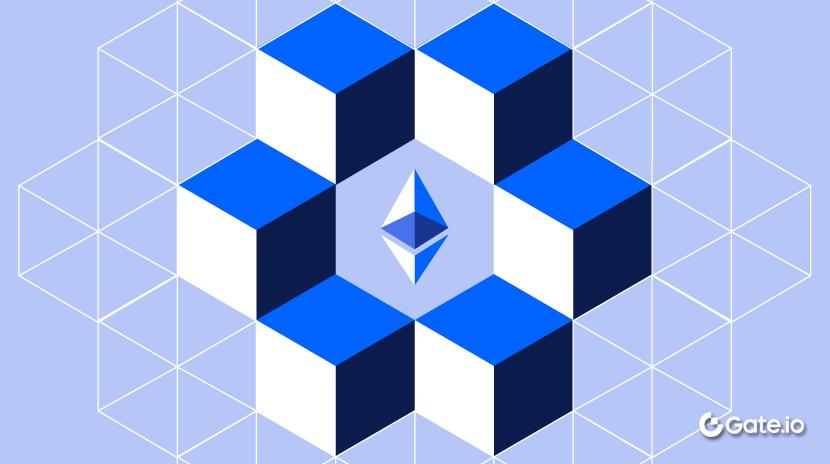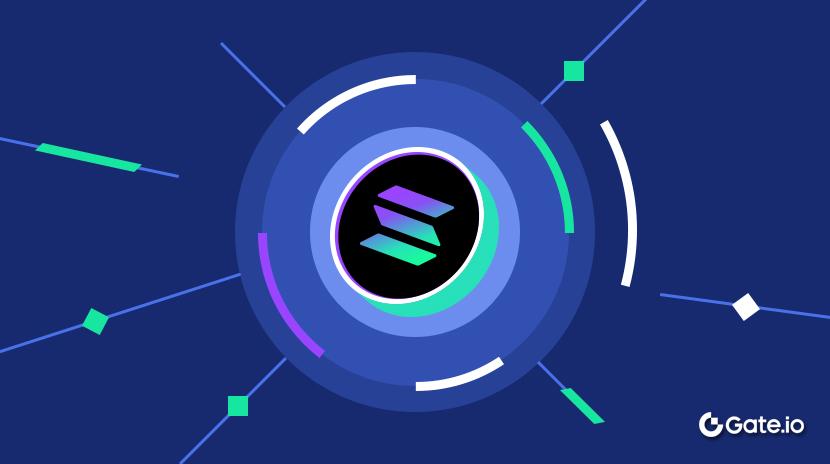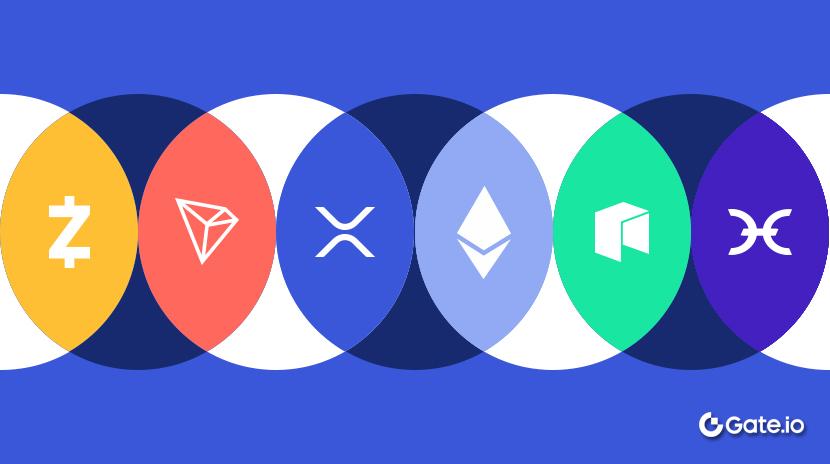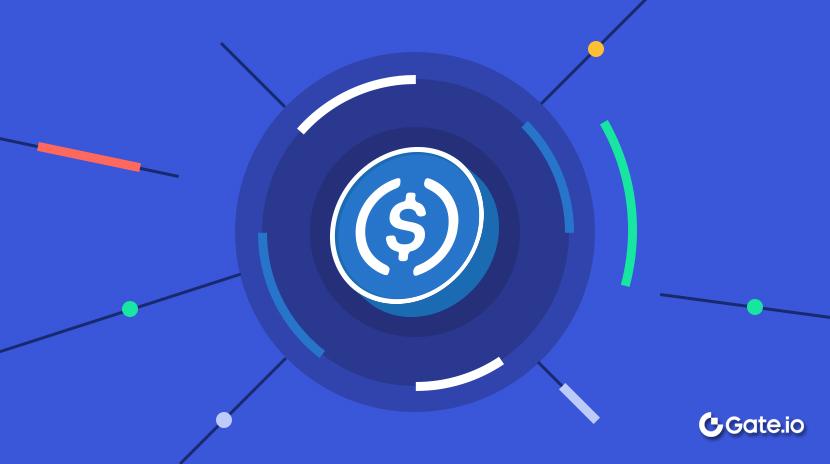Apa yang Diinginkan Pengguna Jika Mereka Tidak Menginginkan Koin VC atau Koin Meme?
1. Pengantar
Bukan hanya fenomena koin VC dan koin meme yang telah memicu refleksi lebih dalam dalam ruang kripto; banyak figur terkenal di industri telah mengajukan pertanyaan serupa dan sedang aktif mencari solusi. Sebagai contoh, selama diskusi Twitter Space tentang 'koin pacar,' Jason Chen (Chen Jian) bertanya apakah token yang terdaftar di Binance memiliki mekanisme untuk mencegah tim proyek membuang token dan pergi begitu saja. Baru-baru ini, artikel CZ 'Sebuah Ide Gila untuk Penerbitan Token' juga berusaha mengatasi isu-isu ini.
Saya percaya bahwa semua tim yang benar-benar bekerja pada proyek-proyek berarti berharap pasar akan memberi imbalan kepada kontributor nyata — daripada membiarkan skema Ponzi, penipu, dan spekulator murni mengambil keuntungan industri dan mengganggu perkembangan yang sehat.
Karena koin VC dan koin meme menawarkan studi kasus yang sangat baik, artikel ini akan berfokus pada menganalisis kedua fenomena tersebut.
2. Masa lalu dan sekarang koin VC
Koin VC tidak diciptakan dari udara. Ada alasan historis untuk kemunculannya. Meskipun koin VC mungkin tidak terlihat sempurna sekarang, mereka juga memainkan peran yang relatif penting pada awalnya, dan proyek-proyek penting dalam industri memiliki partisipasi dari VC.
2.1. Mania ICO tahun 2017: Sebuah Gejolak
Koin VC tidak muncul begitu saja. Mereka muncul karena alasan historis. Meskipun sekarang terlihat cacat, mereka pernah memainkan peran penting, dengan sebagian besar proyek utama di ruang tersebut melibatkan VC.
Tahun 2017 adalah tahun yang kritis bagi Penawaran Koin Awal (ICO), dengan lebih dari $5 miliar terkumpul melalui ICO. Selain dari proyek ICO klasik yang dibahas di bawah ini, saya secara pribadi ikut serta dalam beberapa proyek ICO kecil dan mengalami sendiri seberapa liar pasar tersebut — menggambarkannya sebagai “kegilaan chaotic” bukanlah berlebihan. Pada saat itu, jika sebuah token hendak melakukan ICO, mendapat dukungan dari selebriti, dan whitepaper yang layak, maka akan langsung ludes begitu diumumkan di grup obrolan manapun. Orang-orang berperilaku irasional. Dengan sedikit berlebihan, bahkan jika Anda melemparkan tumpukan sampah ke dalam sebuah grup dan menyebutnya sebagai token, kemungkinan besar akan tetap dibeli. (Untuk bukti, cari cerita tentang MLGB — “Ma Le Ge Coin.”)
Alasan dari ledakan ini, seperti yang dirangkum dari percakapan dengan DeepSeek, ChatGPT, dan pemahaman saya sendiri, adalah:
(1) Teknologi penerbitan token telah matang: Terutama setelah peluncuran Ethereum, menjadi mudah bagi pengembang untuk membuat kontrak pintar dan aplikasi terdesentralisasi (DApps), memicu booming ICO.
(2) Faktor tambahan: Permintaan pasar, popularitas yang meningkat dari ideal decentralisasi, harapan investor terhadap keuntungan besar, dan hambatan masuk yang rendah.
Beberapa kasus ikonik termasuk:
Ethereum (ETH): Meskipun ICO Ethereum diluncurkan pada tahun 2014, pada tahun 2017, platform kontrak pintarnya menjadi dasar bagi sebagian besar ICO. Ethereum sendiri diluncurkan melalui ICO dan sejak itu berkembang menjadi proyek kripto terbesar kedua.
EOS: Melakukan ICO selama setahun pada tahun 2017, mengumpulkan hampir $4.3 miliar — salah satu ICO terbesar dalam sejarah. Namun, proyek ini sejak itu mulai redup, sebagian karena keputusan teknis yang buruk dan pemahaman pasar yang kurang memadai.
TRON: Juga mengumpulkan jumlah besar selama ICO tahun 2017, di tengah kontroversi tentang plagiarisme dan pertukaran token. Namun, TRON berkembang dengan cepat dan memenuhi tuntutan pasar dengan baik — berbeda dengan EOS. Kesuksesan TRON dan bisnis stablecoin-nya menunjukkan insting pasar yang tajam dari Justin Sun.
Filecoin: Mengumpulkan lebih dari $250 juta dalam ICO tahun 2017 dengan dukungan yang kuat. Meskipun bukan merupakan keberhasilan yang jelas maupun kegagalan, keberlanjutan jangka panjangnya tetap tidak pasti.
Selain dari contoh-contoh ini, banyak proyek non-klasik yang menciptakan masalah besar, berkontribusi pada konteks historis di mana koin VC kemudian muncul.
Masalah kunci yang terungkap oleh era ICO:
(1) Kurangnya regulasi: Perkembangan cepat ICO menyebabkan penipuan dan skema Ponzi yang merajalela. Diperkirakan 99% proyek entah dibesar-besarkan atau langsung penipuan.
(2) Gelembung pasar: Jumlah modal yang besar terkumpul tanpa manajemen yang efektif, menyebabkan sebagian besar proyek — bahkan yang bertujuan baik — gagal atau keluar terlalu cepat.
(3) Kesenjangan pendidikan investor: Sebagian besar investor ritel kurang memiliki kemampuan untuk menilai proyek atau mengawasi tim pasca investasi.
2.2. Masuk VC dan pengesahan kredibilitas
Melalui deskripsi di atas, kita bisa melihat kekacauan setelah ICO. Pada saat ini, modal ventura (VC) pertama kali melangkah maju untuk menyelesaikan masalah tersebut. VC memberikan dukungan yang lebih dapat diandalkan bagi proyek melalui reputasinya sendiri dan sumber daya, membantu mengurangi banyak masalah yang disebabkan oleh ICO awal. Pada saat yang sama, efek tambahan adalah membantu sebagian besar pengguna melakukan lapisan penyaringan.
Peran VC
(1) Alternatif untuk kekurangan pendanaan akar rumput dari ICO
Mengurangi risiko penipuan: VC melalui 'Due diligence yang ketat' (Latar belakang tim, kelayakan teknis, model ekonomi) Saring 'proyek udara' untuk menghindari penyebaran penipuan white paper di era ICO.
Manajemen dana terstandar: Injeksi modal bertahap (alokasi berdasarkan tonggak) dan periode kunci token diadopsi untuk mencegah tim dari penarikan dan melarikan diri.
Pengikatan nilai jangka panjang: VC biasanya memegang ekuitas proyek atau token kunci jangka panjang, yang sangat terkait dengan pengembangan proyek dan mengurangi spekulasi jangka pendek.
(2) Memperkuat ekologi proyek
Impor sumber daya: Hubungkan proyek dengan sumber daya kunci seperti pertukaran, komunitas pengembang, dan konsultan kepatuhan (seperti Coinbase Ventures untuk membantu proyek mencantumkan mata uang).
Panduan strategis: Membantu dalam merancang model ekonomi token (seperti mekanisme pelepasan token) dan struktur tata kelola untuk menghindari keruntuhan sistem ekonomi.
Endorsement kredibilitas: Efek merek dari VC terkemuka (seperti a16z, Paradigm) dapat meningkatkan kepercayaan pasar terhadap proyek tersebut.
(3) Memajukan kepatuhan industri
VC mempromosikan proyek-proyek untuk proaktif mematuhi hukum sekuritas (seperti Uji Howey AS) dan mengadopsi kerangka pembiayaan kepatuhan seperti SAFT (Perjanjian Sederhana untuk Token Masa Depan) untuk mengurangi risiko hukum.
Keterlibatan VC adalah solusi yang paling langsung terhadap masalah model ICO awal. Secara keseluruhan, VC memainkan peran krusial dalam kesuksesan proyek Web3. Melalui dana, sumber daya, reputasi, dan bimbingan strategis, mereka membantu proyek mengatasi banyak tantangan yang dihadapi oleh ICO awal dan secara tidak langsung membantu publik menyelesaikan penyaringan awal.
2.3. Masalah dengan koin VC
Munculnya hal-hal baru adalah untuk memecahkan beberapa masalah lama, tetapi ketika hal baru ini berkembang ke tahap tertentu, itu sendiri mulai menunjukkan serangkaian masalah. Koin VC adalah kasus seperti itu, dan menunjukkan banyak keterbatasan dalam periode kemudian.
Terutama tercermin dalam:
(1) Konflik kepentingan
VC adalah lembaga investasi yang mendapatkan keuntungan melalui investasi. Hal ini dapat mendorong over-tokenisasi proyek (seperti tekanan penjualan yang tinggi) atau memberikan prioritas pada pelayanan portofolio investasinya sendiri (seperti bursa VC yang mendukung proyek “biologis”).
(2) Ketidakmampuan untuk menyelesaikan masalah pengembangan proyek selanjutnya.
(3) Bersekongkol dengan pihak proyek untuk menipu investor ritel (beberapa pihak proyek dan VC beroperasi dengan cara ini, dan VC dari merek besar cenderung lebih baik).
Institusi VC hanya menyelesaikan tahap awal investasi dan keluar dari keuntungan. Di satu sisi, mereka tidak memiliki kewajiban untuk pengembangan proyek lebih lanjut, dan di sisi lain, mereka tidak memiliki kemampuan atau keinginan untuk melakukannya. (Apakah lebih baik jika kita membatasi periode unlock VC yang panjang?)
Masalah utama dengan koin VC adalah setelah mata uang tim proyek terdaftar, kurangnya motivasi untuk melanjutkan konstruksi. Baik pihak VC maupun proyek akan mencairkan dan kabur setelah mendaftarkan mata uang. Fenomena ini membuat investor ritel membenci koin VC, tetapi alasan utamanya masih kurangnya pengawasan dan manajemen proyek yang efektif, terutama dalam pencocokan dana dan hasil.
3. Tanda Lahir Adil dan Fenomena Koin Meme
Inskripsi dan Fairlanunch, yang pecah pada tahun 2023, dan model pompa memecoin, yang pecah pada tahun 2024, telah mengungkapkan beberapa fenomena dan mengekspos beberapa masalah.
3.1. Pengepungan inskripsi dan Fairlanunch
Pada tahun 2023, dua tren mendominasi ruang kripto: bangkitnya Inscriptions (metadata token on-chain) dan popularitas model Fair Launch. Kedua tren tersebut muncul dari ketidakpuasan terhadap ICO dan dominasi VC. Terutama, banyak VC mengeluh bahwa mereka tidak memiliki kesempatan untuk berpartisipasi dalam proyek-proyek inskripsi di tahap pasar primer, bahkan di pasar sekunder, investasi sangat berisiko. Hal ini mencerminkan keinginan komunitas akan desentralisasi dan keadilan.
Pengukiran pertama kali mendapatkan perhatian pada Bitcoin, dengan standar BRC-20 yang mengarah ke token seperti ORDI dan SATS.
Alasan kenaikan mereka:
- Kebutuhan ekosistem Bitcoin akan inovasi.
- Permintaan akan ketahanan sensor dan desentralisasi.
- Hambatan partisipasi yang rendah dan potensi penciptaan kekayaan.
- Pemberontakan terhadap proyek yang didominasi VC.
- Daya tarik peluncuran adil.
Masalah dengan inskripsi:
- Keadilan semu: Banyak alamat dikendalikan oleh beberapa paus atau pemain institusi yang menyamar.
- Tantangan likuiditas: Biaya transaksi tinggi dan waktu transaksi lambat di mainnet Bitcoin.
- Kebocoran nilai: Biaya gas tinggi yang dibayarkan kepada para penambang tidak mengalir kembali ke dalam ekosistem proyek.
- Kekurangan skenario aplikasi: Sebagian besar inskripsi tidak memiliki kegunaan di luar spekulasi.
3.2. Munculnya Pump.fun dan Meme Coin Mania
Budaya meme dimulai sudah lama — awalnya sebagai fenomena budaya. Di dunia kripto, ia mendapatkan daya tarik melalui proyek NFT awal, seperti penciptaan Rare Pepes pada Counterparty tahun 2014. Koin meme adalah perpanjangan dari budaya ini.
Pada tahun 2024, Pump.fun, yang dibangun di atas Solana, menjadi platform utama untuk peluncuran koin meme. Kesederhanaan platform dan proses loop tertutup — penerbitan token + pembuatan kumpulan likuiditas + daftar pertukaran terdesentralisasi (DEX) — memicu spekulasi koin meme.
Kontribusi utama Pump.fun:
Platform ini menggabungkan layanan-layanan yang sebelumnya terpisah (penerbitan token, penyediaan likuiditas, dan perdagangan DEX) ke dalam platform tunggal yang mulus, sehingga memudahkan peluncuran dan perdagangan koin meme dengan cepat.

Pada awalnya, proporsi token di Pump.fun yang diluncurkan dengan sukses di DEX — umumnya disebut dalam industri sebagai “tingkat kelulusan” — sangat rendah, hanya sekitar 2% hingga 3%. Hal ini menunjukkan bahwa, pada tahap tersebut, fungsi hiburan lebih dominan daripada fungsi perdagangan, yang sesuai dengan sifat meme. Namun, selama periode puncak, tingkat kelulusan sering kali melebihi 20%, berubah menjadi mesin spekulasi murni.
Sebuah analisis yang dibagikan di Twitter juga mengilustrasikan masalah-masalah yang melekat pada model memecoin (meskipun saya belum memverifikasi kehandalan data ini secara pribadi).

Pendapatan total Pump.fun telah mencapai hampir $600 juta, hingga pada titik di mana bahkan Presiden AS Trump dan keluarganya mengeluarkan token mereka sendiri — sebuah indikasi yang jelas dari pertumbuhan eksplosif dan kegilaan puncak pasar memekoin. Menurut analisis dari Dune, memecoin juga sedang mengalami siklus yang familiar: dari penciptaan, hingga pertumbuhan, dan akhirnya ke fase eksplosif.

Masalah Utama dengan Memecoin
Penipuan Sistemik dan Runtuhnya Kepercayaan: Menurut data Dune, sekitar 85% token yang diluncurkan di Pump.fun adalah penipuan, dengan pendiri mencairkan uang rata-rata hanya dalam 2 jam.
Iklan Palsu yang Merajalela: Tim proyek seringkali memalsukan dukungan dari KOL terkenal dan volume perdagangan palsu (menggunakan bot wash-trading). Sebagai contoh, token MOON mengklaim memiliki dukungan dari Elon Musk, yang sebenarnya difabrikasi dengan Photoshop.
Ekosistem Pasar Terdistorsi: Memecoin menciptakan efek penyedot likuiditas, menghabiskan sejumlah besar sumber daya on-chain dan mendorong keluar ruang bagi proyek-proyek sah untuk tumbuh. Misalnya, TVL (Total Nilai Terkunci) dari protokol DeFi di jaringan Solana telah turun 30%. Lingkungan ini membuat pengguna nyata pergi, karena investor biasa tidak mampu bersaing dengan bot dan perdagangan insider, secara bertahap mendorong mereka keluar dari pasar. Bahkan ada laporan tim proyek menggunakan dana yang terkumpul untuk memanipulasi memecoin untuk arbitrase dan kemudian menghilang.
Memecoin telah berevolusi dari produk hiburan tahap awal menjadi lingkungan PVP (Player vs. Player) tahap menengah hingga akhir, dan akhirnya menjadi arena PVB (Player vs. Bot) — alat bagi sekelompok kecil ahli untuk mendapatkan keuntungan dengan merugikan investor ritel. Ketidakhadiran injeksi nilai yang berarti ke dalam memecoin tetap menjadi isu kritis, dan tanpa menangani hal ini, memecoin ditakdirkan untuk menurun.
4. Jenis proyek apa yang sebenarnya diinginkan pengguna atau pasar?
Dengan meninjau sejarah pengembangan proyek Web3, kami telah memahami alasan historis di balik munculnya token yang didukung VC (koin VC), pro dan kontra mereka, dan juga secara singkat menganalisis fenomena inskripsi dan memecoin yang didorong oleh platform seperti Pump.fun. Tren-tren ini semua adalah produk evolusi industri. Melalui analisis ini, kita dapat melihat bahwa masih ada beberapa masalah mendasar dalam pengembangan proyek Web3 saat ini.
Catatan: Apakah koin VC dan memecoin mengungkapkan semua masalah, atau setidaknya masalah utama saat ini?
4.1. Ringkasan masalah yang ada
Berdasarkan analisis yang dilakukan sejauh ini, masalah utama saat ini untuk proyek Web3 adalah:
- Insentif Bangunan Berkelanjutan:
Proyek harus mempertahankan motivasi pengembangan jangka panjang. Tidak ada pihak yang seharusnya menerima dana berlebih terlalu awal. Pemegang token dan kontributor masa depan memerlukan imbalan yang berkelanjutan — bukan menjadi target eksploitasi dan penipuan.
- Mengurangi atau Menghilangkan Dinamika PVP (Player vs. Player):
Banyak pasar masih berputar di sekitar permainan zero-sum. Model peluncuran yang adil lebih menarik karena mengurangi kekuatan “paus” atau manipulator. Namun, bahkan dengan peluncuran yang adil, penawaran pasca-DEX masih menjadi perlombaan, di mana peserta awal mendapatkan keuntungan lebih karena nilai kolam tetap.
Bagaimana cara mengatasi masalah-masalah ini?
1. Struktur Manajemen Proyek:
Mencegah tim proyek atau investor VC mendapatkan sejumlah dana yang besar terlalu cepat. Sebagai alternatif, pastikan dana hanya dapat diakses dalam kondisi yang diatur atau dialokasikan dengan cara yang terus-menerus memberikan imbalan kepada kontributor dan pembangun.
2. Injeksi Nilai Eksternal yang Berkelanjutan:
Ini kunci untuk memecahkan masalah PVP. Aliran nilai eksternal yang berkelanjutan dapat memberi reward kepada pemegang token jangka menengah dan panjang serta para pembangun, memberikan dukungan nyata bagi tim proyek untuk pengembangan berkelanjutan. Ini juga membantu membangun harapan pertumbuhan jangka panjang bagi pemegang token dan mengurangi skenario pencairan dana awal dan penarikan tiba-tiba.
Kesimpulan-konklusi ini, meskipun terlihat sederhana, memerlukan penjelasan yang lebih mendalam. Masalah manajemen proyek tidak bisa dipisahkan dari analisis pemangku kepentingan dalam ekosistem, dan harus dipelajari di berbagai tahap proyek (penyaluran, sirkulasi, tata kelola) untuk mengidentifikasi dan menangani isu-isu secara dinamis.
4.2. Masalah manajemen berbagai pemangku kepentingan dan berbagai tautan proyek
1. Pemangku kepentingan yang berbeda
Dalam proyek Web3, bagian yang paling erat hubungannya dengan kepentingan adalah desain model ekonomi. Pihak-pihak yang terlibat dalam sebuah proyek umumnya meliputi tim proyek, investor, yayasan, pengguna dan komunitas, penambang, bursa, pembuat pasar, atau pihak-pihak lain yang berpartisipasi dalam ekosistem proyek. Model ekonomi perlu merencanakan alokasi token dan insentif kontribusi untuk berbagai pihak terlibat pada berbagai tahapan. Model ekonomi umumnya mencakup proporsi distribusi token untuk pihak-pihak terlibat, aturan pelepasan token, dan metode insentif. Proporsi dan aturan pelepasan yang spesifik ditentukan berdasarkan situasi aktual setiap proyek dan tingkat kontribusi dari masing-masing pihak, tanpa angka yang tetap. Di luar proyek, ada juga sekelompok penonton (spekulan, pemburu airdrop, penipu, dan sebagainya).

Di antara berbagai kelompok pemangku kepentingan, penting untuk mencegah pihak manapun dalam ekosistem mengambil keuntungan yang berlebihan. Misalnya, dalam proyek koin VC, tim proyek dan investor mengambil sebagian besar nilai token, menyebabkan kurangnya motivasi yang berkelanjutan untuk pengembangan di masa depan. Sementara itu, juga penting untuk mencegah kelompok eksternal, seperti spekulator dalam memecoin, mendapatkan manfaat yang tidak semestinya.
Menganalisis masalah dari berbagai tahap, termasuk penerbitan, peredaran, dan tata kelola.
(1) Penerbitan Token
Ada berbagai cara untuk menerbitkan mata uang digital. Selain penambangan melalui PoW, ada metode seperti ICO, STO, IBO, dan berbagai bentuk airdrop seperti yang digunakan oleh Ripple. Terlepas dari metode tersebut, tujuan utama penerbitan mata uang digital adalah dua: pertama, untuk mengumpulkan dana; kedua, untuk mendistribusikan mata uang digital ke tangan pengguna, memungkinkan lebih banyak orang menggunakannya.
(2) Peredaran dan pengelolaan token
Dibandingkan dengan awal proyek Web3, penerbitan token sekarang memiliki berbagai metode, mengakibatkan volume mata uang digital yang masuk ke dalam peredaran menjadi besar. Karena permintaan yang tidak mencukupi dan keterbatasan alat untuk mengelola likuiditas token, banyak isu muncul di tahap peredaran. Manajemen token sering kali dicapai melalui penyediaan berbagai aplikasi. Misalnya, fungsi perdagangan token, penambangan token, ambang batas masuk keanggotaan (berdasarkan jumlah token atau kepemilikan NFT), dan konsumsi dalam aplikasi (seperti biaya gas pada rantai publik, biaya registrasi ENS, dan biaya perpanjangan).

Token dilepas terlalu cepat dalam sebuah proyek, yang mengacu pada bagian antara garis merah dan garis hijau, perlu tunduk pada mekanisme kunci likuiditas untuk mencegah pemegang saham manapun mengambilnya lebih awal. Token yang terkunci ini, bersama dengan perkembangan proyek selama periode konstruksi, melibatkan isu-isu manajemen.
(3) Masalah tata kelola proyek
Dalam proyek Web3, pengendalian yang paling langsung dicapai melalui desain mekanisme konsensus dan model ekonomi. Token dalam model ekonomi digunakan untuk mengendalikan pasokan dan konsumsi sumber daya. Desain model ekonomi memainkan peran penting dalam proyek Web3, tetapi ruang lingkup efektivitasnya terbatas. Ketika model ekonomi tidak dapat sepenuhnya menangani fungsi tertentu, area di luar jangkauannya perlu ditambahi dengan cara lain. Mekanisme pengaturan komunitas berfungsi sebagai tambahan fungsional untuk area di mana model ekonomi kurang efektif.
Karena sifat terdesentralisasi dunia blockchain dan ketergantungannya pada aturan yang dapat diprogram, organisasi komunitas seperti DAOs dan DACs muncul, yang dapat dibandingkan dengan struktur terpusat dari perusahaan tradisional dan tata kelola perusahaan di dunia nyata.
Bentuk manajemen ini, yang menggabungkan model DAO dan yayasan, dapat lebih baik mencapai manajemen dana dan ekosistem sambil juga memberikan cukup fleksibilitas dan transparansi. Anggota manajemen DAO perlu memenuhi syarat tertentu dan seharusnya termasuk pemangku kepentingan utama dan lembaga pihak ketiga secepat mungkin. Jika bursa yang mencantumkan token dianggap sebagai peserta pihak ketiga, apakah ini sejalan dengan saran Jason bahwa bursa harus memiliki hak dan peran pengawasan serta notaris tertentu? Sebenarnya, selama insiden manipulasi pasar baru-baru ini yang melibatkan pembuat pasar GoPlus dan Myshell, Binance memainkan peran semacam ini.
Apakah tipe struktur manajemen ini juga dapat membantu menerapkan model yang diusulkan oleh CZ dalam artikelnya “Sebuah Ide Gila untuk Penerbitan Token”? Kami akan menggunakan konsep tata kelola yang dijelaskan dalam artikel CZ sebagai contoh untuk analisis, seperti yang ditunjukkan dalam diagram di bawah ini:

(1) Awalnya, 10% dari token akan terbuka dan dijual di pasar. Hasilnya akan digunakan oleh tim proyek untuk pengembangan produk/platform, pemasaran, gaji, dan biaya lainnya. (Desain ini bagus, tetapi siapa yang akan menangani manajemen dan pengawasan? Apakah akan lebih baik jika bagian ini dari pekerjaan diamanahkan kepada organisasi DAO proyek, menggunakan sistem perbendaharaan yang dikombinasikan dengan pengawasan pihak ketiga?)
(2) Setiap pembukaan masa depan harus tunduk pada beberapa kondisi yang perlu dievaluasi. (Desain ini bertujuan pada pekerjaan yang berkelanjutan dan manajemen likuiditas token setelah periode awal. Jika tanggung jawab ini diserahkan kepada manajemen DAO, hasilnya juga bisa lebih baik.)

(3) Tim proyek memiliki hak untuk menunda atau mengurangi skala setiap pembukaan. Jika mereka tidak ingin menjual lebih banyak, mereka tidak berkewajiban untuk melakukannya. Namun, setiap kali mereka dapat menjual (membuka kunci) hingga 5%, dan kemudian mereka harus menunggu setidaknya enam bulan sampai harga meningkat dua kali lipat lagi. (Desain ini harus dilaksanakan oleh lembaga pihak ketiga seperti DAO, mengubah otoritas tim proyek menjadi keputusan yang dibuat oleh DAO. Karena tim proyek juga merupakan anggota penting dari DAO, ini seharusnya tidak menghasilkan efek samping berlebihan.)
(4) Tim proyek tidak memiliki otoritas untuk mempersingkat atau meningkatkan skala pembukaan kunci selanjutnya. Token harus dikunci dalam kontrak pintar dengan kunci yang dikendalikan oleh pihak ketiga. Ini mencegah token baru banjir ke pasar selama penurunan harga dan juga memberikan insentif kepada tim proyek untuk pengembangan jangka panjang. (Desain ini lebih lanjut menggambarkan kebutuhan akan lembaga pihak ketiga, yang akan menawarkan kontrol dan tata kelola yang lebih baik dibandingkan dengan hanya menggunakan kontrak pintar. Bahkan, CZ secara tidak sadar telah mengusulkan gagasan tentang DAO dalam kerangka ini.)
Tentu saja, ini hanyalah sebuah studi kasus. Tata kelola proyek nyata melibatkan banyak aspek lainnya. Dengan perkembangan Web3 sampai pada titik ini, kerangka kerja tersebut akan secara bertahap diperbaiki dan diperluas dalam implementasinya, dengan koreksi yang terus-menerus dalam praktik dan penemuan metode yang lebih baik.
4.3. Bagaimana membangun pengembangan proyek jangka panjang (penangkapan nilai dan injeksi nilai)
Tanpa dukungan inovasi teknologi dan aplikasi, proyek-proyek saat ini di industri yang mengandalkan histeria dan promosi tidak akan bertahan lama. Pada akhirnya, masalah token VC dan token meme akan terulang kembali. Sebenarnya, Pumpfun telah menyediakan kerangka kerja yang dapat digunakan sebagai referensi. Kenaikan dan kemunduran selanjutnya disebabkan oleh absennya satu elemen penting: pemberdayaan token (juga disebut sebagai penangkapan nilai dan injeksi nilai), seperti yang diilustrasikan dalam diagram di bawah ini.

Berdasarkan diagram di atas, kita dapat melihat bahwa setelah token VC terdaftar di bursa, tim proyek mendapatkan pengembalian yang substansial dan oleh karena itu kehilangan motivasi untuk pengembangan yang berkelanjutan. Alasannya adalah bahwa pengembangan tahap akhir membawa risiko yang signifikan dan tidak menawarkan imbalan yang cukup — tidak melakukan apa-apa menjadi pilihan terbaik. Namun, masih ada beberapa tim yang mampu dan idealis yang terus membangun, meskipun jumlahnya sedikit. Model memecoin dari Pumpfun secara inheren kurang memiliki pemberdayaan token di tahap-tahap akhir, sehingga menjadi perlombaan siapa yang bisa mencairkan lebih cepat. Mengapa beberapa memecoin seperti Dogecoin dapat terus meningkat nilainya? Penulis percaya ada beberapa alasan, yang akan dibahas secara mendalam dalam kesempatan lain.
Bagaimana cara mencapai suntikan nilai jangka panjang? Apa saja cara untuk memberdayakan token?
Melihat kembali kasus-kasus proyek Web3 sebelumnya, misalnya, bagaimana protokol DeFi menangkap nilai melalui pertambangan likuiditas, bagaimana proyek NFT menyuntikkan nilai eksternal melalui mekanisme royalti, atau bagaimana DAO mengakumulasi nilai melalui kontribusi komunitas. Saat teknologi Web3 semakin matang, lebih banyak "skenario aplikasi" akan muncul, menghasilkan lebih banyak titik integrasi nilai.
Pengambilan nilai dan injeksi nilai eksternal adalah dua pilar dari model ekonomi Web3: yang pertama berfokus pada retensi, sementara yang terakhir berfokus pada aliran masuk. Istilah populer seperti 'akrual nilai' dan 'efek roda terbang' lebih baik mengekspresikan kombinasi dinamis dari keduanya, sementara 'pemberdayaan token' dan 'eksternalitas positif' mendekati konsep tersebut dari perspektif desain fungsional.
Tantangan inti adalah seimbangkan insentif jangka pendek dengan nilai jangka panjang dan hindari jatuh ke dalam model-model 'kertas' dan skema Ponzi.
5. Analisis dari Dua Pasar Banteng Kripto Pertama dan Potensi untuk Ledakan Selanjutnya
Konten sebelumnya menganalisis masalah yang ada dalam model token VC dan memecoin yang saat ini menarik perhatian industri. Apakah memecahkan masalah ini akan mendorong pasar bullish berikutnya? Pertama, mari kita tinjau dua pasar bullish tahun 2017 dan 2021.
Catatan: Konten berikut sebagian didasarkan pada penelitian dari sumber online, wawasan dari pertukaran dengan DeepSeek dan ChatGPT, dan sebagian dari pengalaman pribadi penulis selama pasar bullish 2017 dan 2021. Selain itu, tim kami saat ini sedang mengembangkan produk terkait dengan ekosistem Bitcoin, jadi artikel ini mencakup refleksi pribadi dan penilaian.
5.1. Gejolak ICO Tahun 2017
Pasar bullish 2017 di bidang blockchain adalah hasil dari beberapa faktor yang bekerja sama — terobosan teknologi, pengembangan ekosistem, dan faktor makro eksternal. Menurut analisis industri profesional dan literatur klasik, alasan utamanya dirangkum sebagai berikut:
(1) Lonjakan ICO (Penawaran Koin Awal)
Standar ERC-20 Ethereum secara signifikan menurunkan hambatan penerbitan token. Banyak proyek mengumpulkan dana melalui ICO, dengan lebih dari $5 miliar terkumpul sepanjang tahun.
(2) Fork Bitcoin dan debat scaling
Perselisihan di komunitas Bitcoin tentang solusi skalabilitas (SegWit vs blok besar) menyebabkan fork. Pada Agustus 2017, fork Bitcoin Cash (BCH) terjadi, menarik perhatian pasar pada kelangkaan Bitcoin dan evolusi teknisnya. Harga BTC melonjak dari $1,000 pada awal tahun menjadi puncak sejarah $19,783 pada Desember.
(3) Peningkatan ekosistem kontrak pintar Ethereum
Alat pengembangan smart contract dan DApp telah matang, menarik para pengembang secara massal. Konsep keuangan terdesentralisasi (DeFi) mulai terbentuk, dengan DApps awal seperti CryptoKitties mendorong partisipasi pengguna.
(4) Pelonggaran likuiditas global dan kesenjangan regulasi
Kebijakan suku bunga rendah global pada tahun 2017 mendorong modal untuk mencari aset berisiko tinggi, berimbal hasil tinggi. Regulasi ICO dan mata uang kripto belum diterapkan di sebagian besar negara, memungkinkan aktivitas spekulatif berkembang tanpa terkendali.
Pasar banteng tahun 2017 membentuk dasar bagi industri dengan membangun infrastruktur (seperti dompet dan pertukaran), menarik bakat teknis, dan menarik lebih banyak pengguna baru. Namun, hal itu juga mengungkapkan masalah seperti penipuan ICO dan kurangnya regulasi, yang mendorong industri beralih ke kepatuhan dan inovasi teknologi (seperti DeFi dan NFT) setelah tahun 2018.
5.2. Musim DeFi di tahun 2021
Pasar bullish 2021 di ruang blockchain merupakan hasil dari beberapa faktor yang beresonansi bersama, termasuk pengembangan ekosistem, kondisi makroekonomi, inovasi teknologi, dan partisipasi institusional. Menurut analisis industri profesional dan literatur klasik, alasan tersebut dapat dirangkum sebagai berikut:
(1) Ledakan dan kematangan DeFi (Keuangan Terdesentralisasi)
Pematangan kontrak pintar Ethereum dan peluncuran solusi penskalaan Layer 2 (seperti Optimism dan Arbitrum) mengurangi biaya transaksi dan laten. Ini memicu ledakan aplikasi: total nilai terkunci (TVL) dalam protokol DeFi seperti Uniswap V3, Aave, dan Compound tumbuh dari $1,8 miliar di awal tahun menjadi $25 miliar pada akhir tahun, menarik jumlah modal dan pengembang yang besar.
Farming hasil: Tingkat hasil persentase tahunan (APY) tinggi menarik modal arbitrase ritel dan institusi. Pada saat itu, YF (Yearn Finance, biasa disebut dalam industri sebagai "Dai Fu") pernah memiliki harga yang lebih tinggi dari BTC.
(2) Terobosan utama NFT (Token Non-Fungible)
Karya NFT Beeple “Everydays: The First 5000 Days” terjual seharga $69 juta di Christie’s. Proyek NFT seperti CryptoPunks dan Bored Ape Yacht Club (BAYC) mencapai valuasi melebihi $10 miliar. Platform perdagangan NFT seperti Opensea naik daun.
(3) Masuk modal institusional skala besar
Tesla mengumumkan pembelian senilai $1.5 miliar Bitcoin dan penerimaan pembayaran BTC.
MicroStrategy terus mengumpulkan Bitcoin (mempunyai 124,000 BTC pada akhir 2021).
Kanada menyetujui ETF Bitcoin pertamanya (Purpose Bitcoin ETF pada Februari 2021).
Coinbase melakukan penawaran umum perdana melalui daftar langsung di NASDAQ dengan valuasi $86 miliar.
(4) Makroekonomi global dan kebijakan moneter
Likuiditas berlebihan: Federal Reserve mempertahankan suku bunga nol dan kebijakan pelonggaran kuantitatif, menyebabkan modal membanjiri aset berisiko tinggi.
Harapan inflasi: Kenaikan tahunan Indeks Harga Konsumen (CPI) AS melebihi 7%, dan Bitcoin dianggap oleh beberapa investor sebagai “emas digital” untuk melindungi diri dari inflasi.
(5) Peningkatan penerimaan mainstream
Perluasan skenario pembayaran: PayPal memungkinkan pembelian dan penjualan cryptocurrency bagi pengguna, dan Visa memungkinkan penyelesaian menggunakan USDC.
El Salvador mengadopsi Bitcoin sebagai alat pembayaran yang sah (September 2021).
Efek selebriti: Tokoh publik seperti Elon Musk dan Snoop Dogg sering kali menyebutkan kripto dan NFT.
(6) Persaingan dan inovasi dalam ekosistem multi-rantai
Munculnya blockchain publik baru: Rantai kinerja tinggi seperti Solana, Avalanche, dan Polygon menarik pengguna dan pengembang karena biaya rendah dan transaksi per detik (TPS) yang tinggi.
Terobosan dalam teknologi lintas-rantai: Protokol lintas-rantai dari Cosmos dan Polkadot meningkatkan interoperabilitas aset.
(7) Koin meme dan budaya komunitas
Proyek-proyek luar biasa: Dogecoin (DOGE) dan Shiba Inu (SHIB) melonjak karena hype media sosial (DOGE melihat kenaikan tahunan lebih dari 12.000%).
Frenzy investor ritel: Forum Reddit WallStreetBets (WSB) dan TikTok mendorong gelombang investor ritel masuk ke pasar.
Dampak pada pasar berikutnya
Pasar banteng 2021 mempercepat institusionalisasi, kepatuhan regulasi, dan diversifikasi teknologi industri cryptocurrency, namun juga mengekspos isu-isu seperti peretasan DeFi dan gelembung pasar NFT. Setelah itu, fokus industri beralih ke:
Kepatuhan regulasi: SEC AS meningkatkan pengawasan terhadap stablecoin dan sekuritas ter-tokenisasi.
Keberlanjutan: Ethereum beralih ke Proof of Stake (rencana Merge), dan penambangan Bitcoin mulai menjelajahi solusi energi bersih.
Narrasi Web3: Konsep-konsep seperti metaverse dan DAOs (Organisasi Otonom Terdesentralisasi) menjadi area fokus baru.
5.3. Kapan pasar bullish berikutnya akan terjadi? 2025? Apa tema nya akan menjadi?
Berikut adalah analisis prediktif faktor pendorong potensial untuk pasar bullish cryptocurrency pada tahun 2025, dikombinasikan dengan tren industri saat ini, inovasi teknologi, dan latar belakang makroekonomi. Menurut analisis profesional dalam industri dan literatur klasik, alasannya secara kasar diringkas sebagai berikut:
(1) Aplikasi Web3 berukuran besar dan munculnya kedaulatan pengguna
Aplikasi dunia nyata: Jaringan sosial terdesentralisasi (seperti Nostr, Protokol Lens), game on-chain (GameFi tingkat AAA), dan identitas terdesentralisasi (DID) menjadi mainstream, menggulingkan model internet tradisional tentang kepemilikan data pengguna dan distribusi keuntungan.
Peristiwa kunci: Raksasa teknologi seperti Meta dan Google mengintegrasikan teknologi blockchain, memungkinkan migrasi data pengguna lintas platform.
Teknologi terkait: Kematangan bukti tanpa pengetahuan (ZKP) dan enkripsi homomorfik penuh (FHE) memastikan privasi dan kepatuhan.
(2) Integrasi mendalam AI dan blockchain
Jaringan AI Terdesentralisasi: Pasar kekuatan komputasi berbasis blockchain (seperti Render Network) dan konfirmasi kepemilikan data pelatihan model AI (seperti Ocean Protocol) memecahkan masalah monopoli AI terpusat.
Ekonomi agen otonom: DAO yang didorong AI (seperti AutoGPT) secara otomatis melakukan transaksi on-chain dan tata kelola, meningkatkan efisiensi dan menciptakan model-model ekonomi baru.
(3) Interoperabilitas antara mata uang digital bank sentral global (CBDC) dan stablecoin
Dorongan kebijakan: Ekonomi utama meluncurkan CBDC (seperti euro digital dan dolar digital), membentuk jaringan pembayaran hibrid dengan stablecoin yang patuh (seperti USDC dan EUROe).
Penyelesaian lintas-rantai: Bank for International Settlements (BIS) memimpin pembentukan protokol interoperabilitas CBDC, dengan mata uang kripto menjadi komponen kunci dalam saluran pembayaran lintas batas.
(4) kebangkitan ekosistem Bitcoin dan inovasi Layer 2
Ledakan Layer 2 Bitcoin: Pertumbuhan kontinu kapasitas Jaringan Lightning, munculnya protokol TaprootAssets, dan protokol RGB yang mendukung penerbitan aset di rantai Bitcoin. Ekosistem Stacks memperkenalkan fungsionalitas kontrak pintar.
Upgrade penitipan institusional: BlackRock dan Fidelity meluncurkan opsi ETF Bitcoin dan layanan peminjaman jaminan, membuka atribut alat keuangan Bitcoin.
(5) Kerangka regulasi yang jelas dan partisipasi institusi penuh
Kepatuhan global: Amerika Serikat dan Eropa menerapkan regulasi yang mirip dengan Markets in Crypto-Assets (MiCA) Act, yang mengklarifikasi klasifikasi token dan sistem lisensi pertukaran.
Integrasi keuangan tradisional: JPMorgan dan Goldman Sachs meluncurkan derivatif kripto dan produk struktural. Dana pensiun mengalokasikan lebih dari 2% dari portofolio ke mata uang kripto.
(6) Konflik geopolitik dan narasi de-dollarisasi
Permintaan lindung nilai: Eskalasi risiko geopolitik seperti konflik Rusia-Ukraina dan situasi Selat Taiwan menyebabkan mata uang kripto menjadi alat penyelesaian netral.
Aset cadangan yang terdiversifikasi: Negara-negara BRICS bersama-sama menerbitkan token penyelesaian perdagangan berbasis blockchain, dan beberapa obligasi negara dinyatakan dalam Bitcoin.
(7) Budaya Meme 3.0 dan evolusi DAO komunitas
Koin meme generasi berikutnya: Proyek meme yang digabungkan dengan konten yang dihasilkan oleh AI (AIGC) dan NFT dinamis (seperti karakter anjing 'abadi' yang didorong oleh AI), dengan komunitas yang menentukan arah pengembangan PI melalui voting DAO.
Transformasi ekonomi penggemar on-chain: Selebriti kelas atas seperti Taylor Swift dan BTS menerbitkan token penggemar, membuka konten eksklusif dan berpartisipasi dalam pembagian keuntungan.
Catatan: Untuk menghindari kehilangan kemungkinan terkait apapun, materi analisis di atas telah dipertahankan secara detail.
Dengan merangkum pasar bullish 2017 dan 2021 serta menganalisis potensi untuk 2025, kita dapat secara kasar merujuk pada diagram di bawah untuk beberapa penilaian.

Untuk pola:
Inskripsi pada tahun 2023 dan fenomena pumpfun pada tahun 2024 adalah beberapa fenomena yang dapat menyebabkan lonjakan harga. Jika masalah inskripsi dan pumpfun itu sendiri dapat diselesaikan dan model yang lebih lengkap diproduksi, itu dapat menyebabkan munculnya pasar bullish di beberapa area. Ada kemungkinan besar masih terkait dengan penerbitan aset dan perdagangan aset.
Untuk bidang:
Kira-kira diproduksi di dua bidang:
(1) Dunia Web3 murni
(2) Kombinasi AI dan web3
Analisis Detail:
(1) Aplikasi Web3 berskala besar dan munculnya kedaulatan pengguna:
Menurut pendapat pribadi saya, infrastruktur masih belum cukup matang, dan efek kekayaan belum cukup kuat. Sulit bagi ini untuk secara independen menjadi faktor pendorong utama atau sektor untuk pasar bullish berikutnya—atau setidaknya bukan faktor inti kali ini.
(2) Integrasi mendalam AI dan Web3:
Semua orang telah menyaksikan kekuatan AI. Bisakah sektor ini menjadi tiang pasar bullish berikutnya? Memang sulit untuk memprediksi... Secara pribadi, saya cenderung ke arah pandangan bahwa masih sedikit terlalu dini. Namun sektor ini tidak terduga—fenomena seperti DeepSeek dan Manus yang meledak dalam popularitas tidak mengherankan di dunia AI. Seperti apa DeFi yang didukung oleh AI? Itu adalah pertanyaan terbuka.
(4) Pemulihan ekosistem Bitcoin dan inovasi Layer 2:
Bitcoin tampil baik di pasar bullish tahun 2017 dan 2021. Saat ini, kapitalisasi pasar Bitcoin mencapai 60% dari seluruh pasar kripto, dan efek kekayaan cukup kuat. Jika sektor ini melihat model-model bagus yang dikombinasikan dengan eksekusi teknis yang kuat, probabilitas memicu pasar bullish sangat tinggi.
(7) Budaya Meme 3.0 dan DAO-ifikasi:
Jika budaya meme dapat menyelesaikan isu nol-sum PVP (pemain-lawan-pemain) dan mencapai injeksi nilai eksternal yang berkelanjutan, apakah itu bisa menjadi faktor pendorong untuk pasar bullish berikutnya? Jika dilihat dari perspektif efek kekayaan, ini akan cukup sulit.
Adapun (3), (5), dan (6) - faktor-faktor ini kemungkinan akan mempercepat perkembangan dan menambah bahan bakar ke api, tetapi dengan sendirinya, mereka tidak cukup kuat untuk langsung memicu pasar bullish.
Jika tahun 2025 ternyata menjadi pasar bullish, para penggerak yang paling mungkin adalah:
Ekosistem Bitcoin dan inovasi Layer 2, dengan model-model baru yang muncul dari penerbitan aset dan perdagangan.
Perpotongan antara AI dan Web3, khususnya model perdagangan yang didukung AI.
Selain menganalisis sektor dan model, waktu nyata dari lonjakan pasar bullish sebagian besar akan bergantung pada faktor-faktor makro eksternal.
Semua di atas hanyalah pemikiran pribadi belaka dan tidak merupakan saran investasi apapun.
Disclaimer:
- Artikel ini dicetak ulang dari [TechFlow]. Hak cipta milik penulis asli [Fu Shaoqing, SatoshiLab, BTC Studio dari Pulau Segalanya]. Jika ada keberatan terhadap cetak ulang ini, silakan hubungiPelajari Gerbangtim, dan kami akan menanganinya segera sesuai dengan prosedur yang relevan.
- Penafian: Pandangan dan pendapat yang terdapat dalam artikel ini semata-mata milik penulis dan tidak merupakan nasihat investasi apa pun.
- Versi bahasa lain dari artikel ini telah diterjemahkan oleh tim Gate Learn. Tanpa menyebutkanGate.com, dilarang menyalin, mendistribusikan, atau menjiplak konten terjemahan.
Artikel Terkait

Bagaimana Mempertaruhkan ETH?

Apa itu Tronscan dan Bagaimana Anda Dapat Menggunakannya pada Tahun 2025?

Apa itu Solana?

Apa itu Hyperliquid (HYPE)?

Apa itu Altcoin?


